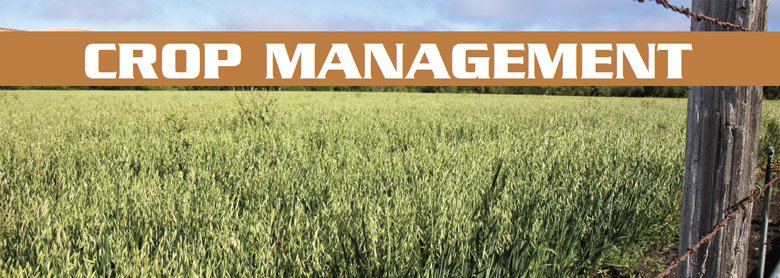Hopefully the snow is gone from your fields, but even with the best-laid plans last fall, alfalfa and alfalfa grass mix fields should be evaluated as they green up. Winter conditions can have large impacts on the amount of alfalfa present in the field for the following year. Loss of alfalfa in a stand will result in weeds filling in the space and a loss in yield and quality of the forage harvested.
When evaluating a stand for rotation, you should look at stand health, soil fertility levels, manure applications, drainage, slope, and planned crop rotation. Follow these six steps below to learn better field management.
1. STAND HEALTH — As the stand begins to green up, walk the field to count plants and stems in a few locations. A clear sign of a declining stand is lack of green-up in the spring. A stand that should be kept in alfalfa will have six healthy plants or 55 stems per square foot of alfalfa. A way to assess this is to make a one foot by one foot square and toss it out into the field in a few places. Another indication of stand health is amount of dandelions, as they will fill in as the desired species die out.
2. SOIL FERTILITY — Soil pH and potassium (K) levels are very important for good alfalfa stands. Soil pH needs to be maintained above 6.5 for good alfalfa health. In a field with low pH and decreased stand, rotating will allow for a lime application that is incorporated and has time to react before seeding to alfalfa or alfalfa grass mix again. Alfalfa and some grasses will take up high levels of K, depleting the soil reserves and decreasing the productivity of the stand. Low soil phosphorus (P) levels will also decrease stand life. It is best to consult your soil testing lab and your state guidelines for P and K soil test levels that are optimum for alfalfa or alfalfa grass mixes. University of Vermont and Cornell University.
3. MANURE APPLICATIONS — This is directly related to the soil fertility levels. Manure applications are good at maintaining soil test levels of P and K. Often in the first few years after seeding alfalfa, producers will avoid applying manure. Knowing when and how much manure was applied will help you interpret soil testing results. Additionally, if manure has not been applied during the life of the stand, using the soil test and needs of the rotated crop can allow for higher rates of manure application.
4. DRAINAGE — When selecting fields for seeding alfalfa, remember that it will always do best in your best-drained fields. Alfalfa stands will not last as long in a wet field. If you have observed water problems in the field, a rotation year is a good time to modify the field through grading or the installation of tile drainage. Improving drainage in a field will improve the yield of all the crops that you grow.
5. SLOPE — Some of the fields you have in alfalfa or alfalfa grass mixes may be your fields with steeper slopes. Slopes can limit your ability to rotate to different crops and the length of the crop rotation. This can be tackled a few ways—for example, frost seeding with a grass and clover mix to boost the yield and quality of the stand, or consider the addition of cover crops or strip cropping. On the steepest slopes of the farm, letting the alfalfa die out and going to an all-grass stand might be the best option.
6. PLANNED CROP ROTATION — If you are working with a nutrient management planner or your local NRCS office on a conservation plan, make sure you check with them before making a rotation change. Changing a rotation too soon without considering the impact of that change on your soil loss can affect your ability to participate in NRCS programs or may be in violation of your state permits.
If you decide it is time to rotate the field, what should or can you plant next? Alfalfa will not do well when planted right after an alfalfa crop that is killed due to autotoxicity. Corn is the best choice for two years to make sure the new stand will not be affected by the autotoxicity. If you are short on feed, taking a first cutting from the field before killing it can be done. In this case, using a short-day corn, a sorghum, or sorghum x sudan grass is an alternative to get a second crop that season. Finally, if you are rotating a field that has erosion concerns, planting a winter cover crop in the years of the row crop can help decrease soil loss.
This article first appeared in Perspectives Magazine Spring 2015 issue. Click here to read the latest issue of Perspectives Magazine or sign up to receive the magazine for free.

